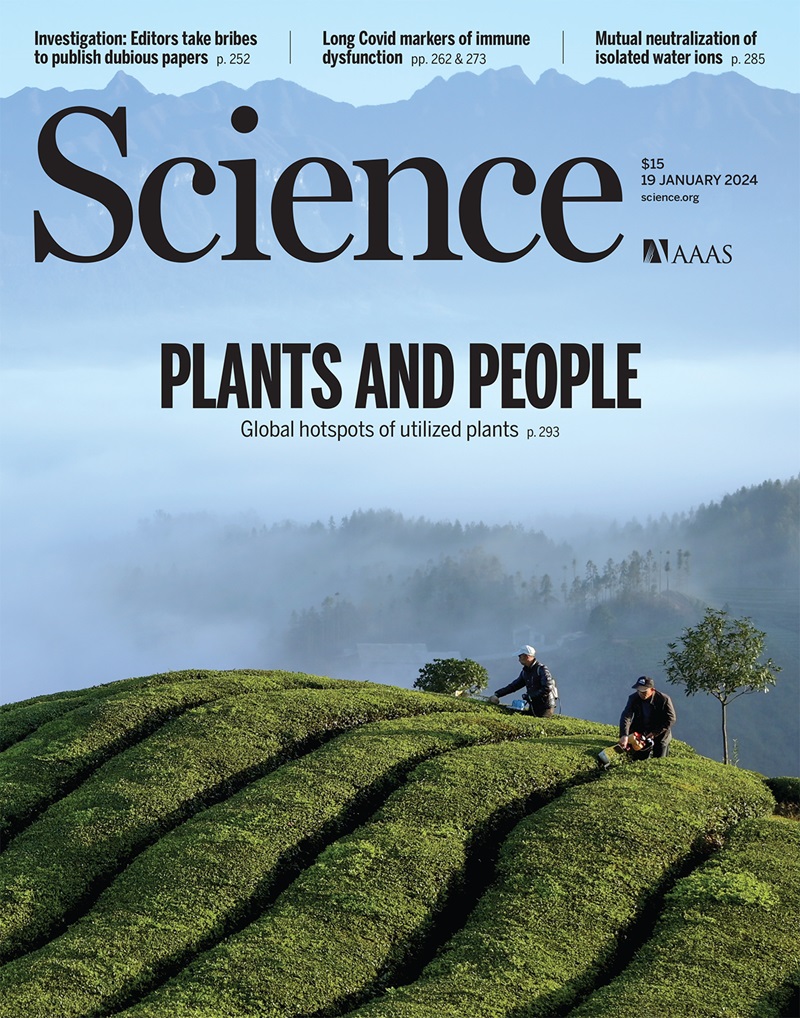Tellurium nanowire retinal nanoprosthesis improves vision in models of blindness
IF 44.7
1区 综合性期刊
Q1 MULTIDISCIPLINARY SCIENCES
引用次数: 0
Abstract
Present vision restoration technologies have substantial constraints that limit their application in the clinical setting. In this work, we fabricated a subretinal nanoprosthesis using tellurium nanowire networks (TeNWNs) that converts light of both the visible and near-infrared–II spectra into electrical signals. The broad-spectrum coverage is made possible by a combination of narrow bandgaps, strong absorption, and engineered asymmetries. Implanted into blind mice, the TeNWNs restored pupillary reflexes and enabled visually cued learning under visible and near-infrared 1550-nanometer light. In nonhuman primates, TeNWNs elicited robust retina-derived neural responses, confirming biocompatibility and feasibility. By restoring lost photosensitivity and extending vision to near-infrared, this nanoprosthesis offers a promising approach for restoring vision.
碲纳米线视网膜纳米假体改善失明模型的视力
目前的视力恢复技术有很大的局限性,限制了它们在临床环境中的应用。在这项工作中,我们利用碲纳米线网络(TeNWNs)制造了一种视网膜下纳米假体,该假体可以将可见光和近红外光谱转换为电信号。广谱覆盖是由窄带隙、强吸收和设计不对称的组合而成的。在1550纳米可见光和近红外光下,将TeNWNs植入失明小鼠后,瞳孔反射恢复,视觉提示学习能力增强。在非人灵长类动物中,TeNWNs引发了强大的视网膜源性神经反应,证实了生物相容性和可行性。通过恢复失去的光敏性和将视力扩展到近红外,这种纳米假体为恢复视力提供了一种很有前途的方法。
本文章由计算机程序翻译,如有差异,请以英文原文为准。
求助全文
约1分钟内获得全文
求助全文
来源期刊

Science
综合性期刊-综合性期刊
CiteScore
61.10
自引率
0.90%
发文量
0
审稿时长
2.1 months
期刊介绍:
Science is a leading outlet for scientific news, commentary, and cutting-edge research. Through its print and online incarnations, Science reaches an estimated worldwide readership of more than one million. Science’s authorship is global too, and its articles consistently rank among the world's most cited research.
Science serves as a forum for discussion of important issues related to the advancement of science by publishing material on which a consensus has been reached as well as including the presentation of minority or conflicting points of view. Accordingly, all articles published in Science—including editorials, news and comment, and book reviews—are signed and reflect the individual views of the authors and not official points of view adopted by AAAS or the institutions with which the authors are affiliated.
Science seeks to publish those papers that are most influential in their fields or across fields and that will significantly advance scientific understanding. Selected papers should present novel and broadly important data, syntheses, or concepts. They should merit recognition by the wider scientific community and general public provided by publication in Science, beyond that provided by specialty journals. Science welcomes submissions from all fields of science and from any source. The editors are committed to the prompt evaluation and publication of submitted papers while upholding high standards that support reproducibility of published research. Science is published weekly; selected papers are published online ahead of print.
 求助内容:
求助内容: 应助结果提醒方式:
应助结果提醒方式:


